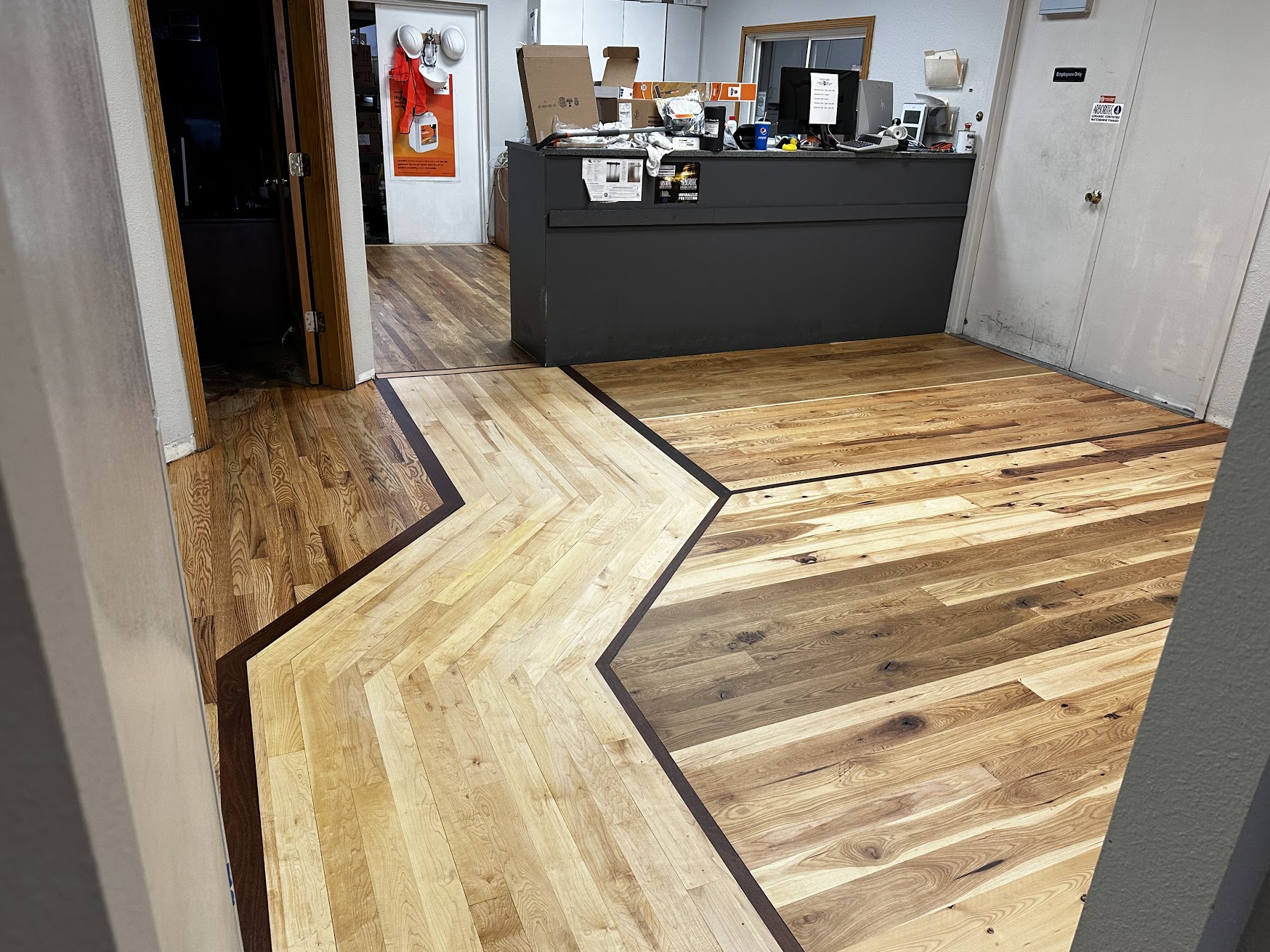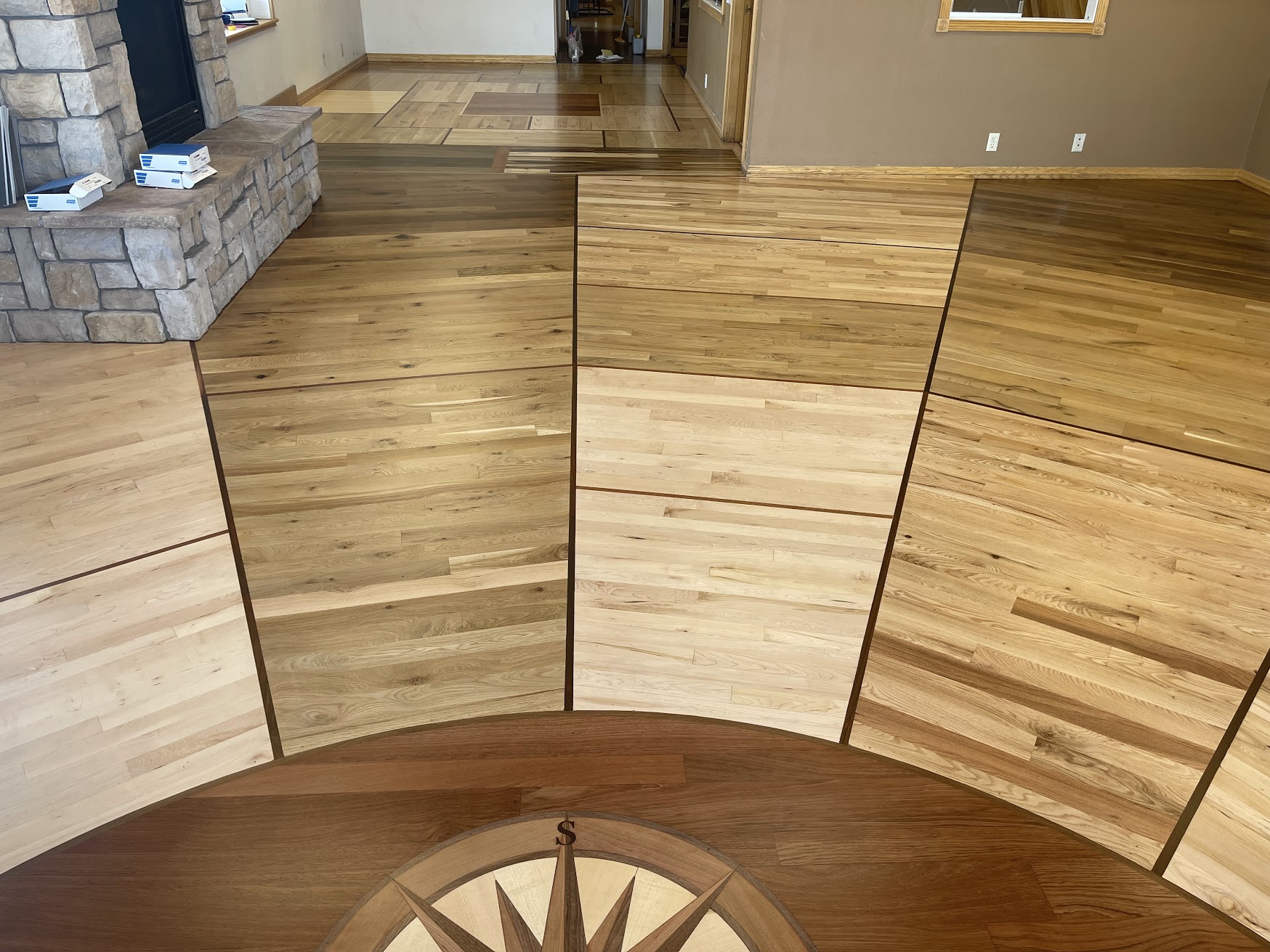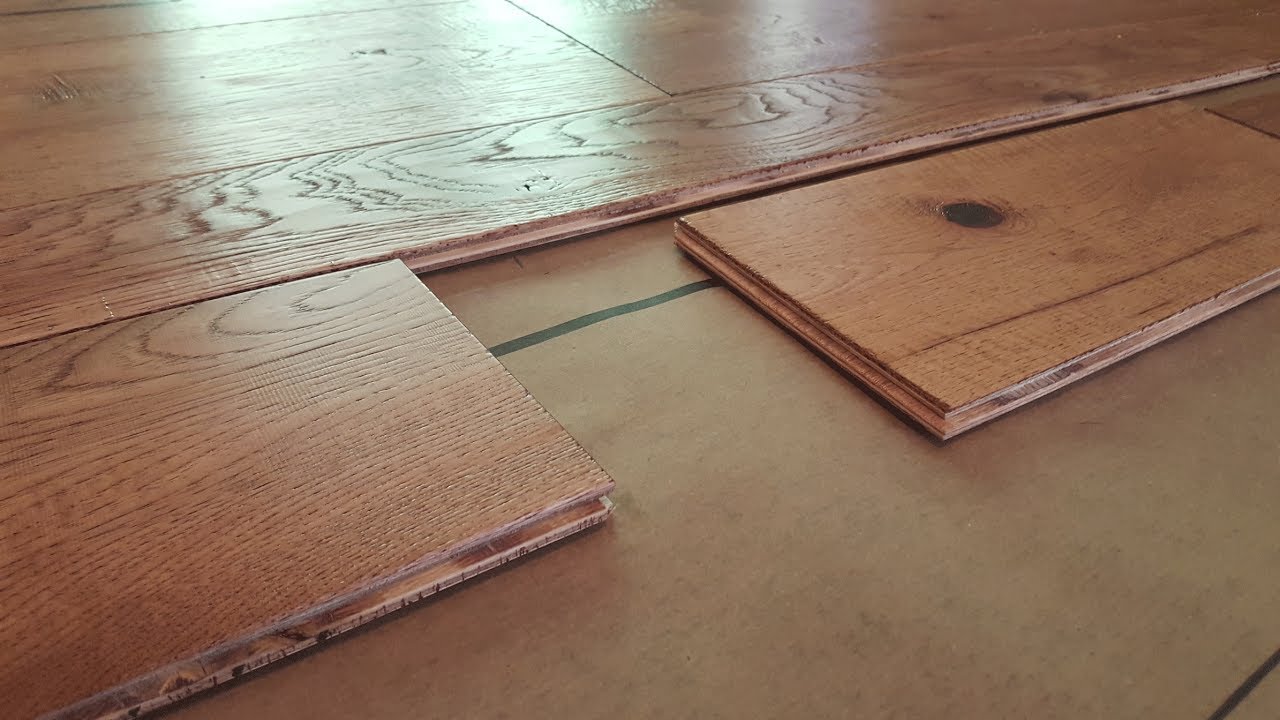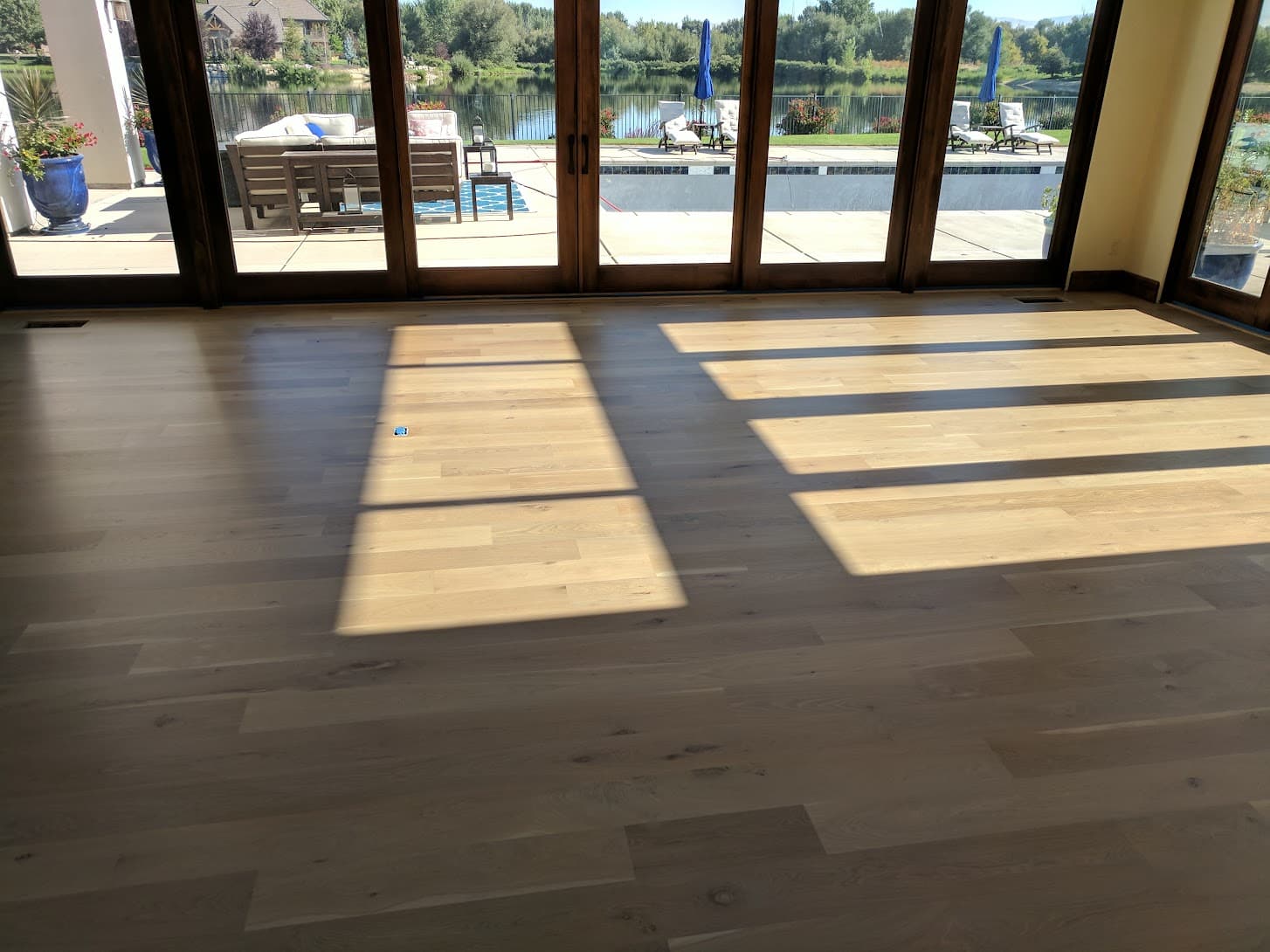This article on refinishing hardwood floors is intended to provide a general overview of the process. Please note that this article does not include all of the detailed steps that a professional would follow. Rather, it is meant to give you an overview of the basic steps involved in refinishing hardwood floors and how to maintain the floor once the process is complete.
Overview of Hardwood Floor Refinishing in Spokane
Hardwood floor refinishing involves sanding the top layer of the wood to reveal the raw wood beneath, and then applying a new finish to protect and improve the appearance of the floor. This process can be used to restore the beauty of a worn or outdated hardwood floor or to change the color or finish to better match the decor of a room. This article will provide a detailed overview of the steps involved in hardwood floor refinishing, the tools and materials needed, and some helpful tips and considerations to keep in mind when selecting a hardwood flooring professional in Spokane, WA.
Moving Everything Off the Floor
The first and most important step in achieving a successful hardwood floor refinish is to clear the floor of all debris, furniture, and decorations. A clean floor will result in a better outcome, as any dust, dirt, or debris can affect the finish or prevent the floor from being perfectly flat. While the flooring contractor will usually clean the floor, it is still a good idea to do a thorough cleaning before they arrive.
Belt Sanding / Drum Sanding
Belt sanding a hardwood floor involves using a drum sander, a large, heavy machine with a rotating sanding drum powered by an electric motor. To use the drum sander, you must attach a sandpaper belt to the drum and then lower the sander onto the floor. It is important to keep the sander moving in a straight line and to apply consistent pressure to avoid creating dips or unevenness in the floor.
Here are the steps for belt sanding a hardwood floor:
- Choose the right sandpaper: The type of sandpaper you use will depend on the condition of the floor and the desired level of finish. For example, if the floor is in good condition and you’re just looking to refresh the finish, you may only need to use medium grit sandpaper. However, if the floor is heavily worn or damaged, you may need to start with a coarser grit sandpaper to remove more material.
- Start the sander: Turn on the sander and lower it onto the floor. Begin sanding the floor in a straight line, starting at one end of the room and working your way to the other end.
- Keep the sander moving: Keep the sander moving in a straight line and maintain consistent pressure to avoid creating dips or unevenness in the floor. There may be instances where the sander does not go straight due to the condition of the floor or pre-existing damage.
- After each pass, a higher grit sandpaper will be used until the final grit is reached. Typically, there are 2-3 passes with a large machine or belt sander.
Edging
Hardwood edging involves sanding the areas around the edges of a hardwood floor and in corners where a drum sander cannot reach. This step is usually done after sanding the main portion of the floor with a belt sander. The purpose of hardwood edging is to create a smooth, even transition between the main portion of the floor and the edges and corners, and to remove any imperfections or damage in these areas.
Edging a hardwood floor with an edger sander involves using a smaller, hand-held sander to sand the areas around the edges of the room and in corners where a drum sander cannot reach. This step is usually done after sanding the main portion of the floor with a drum sander. Here are the steps for using an edger sander to edge a hardwood floor:
- Turn on the edger sander: Turn on the edger sander and lower it onto the floor. Begin sanding the floor in a straight line, starting at one end of the room and working your way to the other end.
- Keep the edger sander moving: Keep the edger sander moving in a straight line and maintain consistent pressure to avoid creating dips or unevenness in the floor. You’ll need to periodically empty the dust bag on the sander and replace the sandpaper as needed.
- Sand the corners: Use the edger sander to sand the corners of the room, being careful to keep the sander moving in a straight line and to maintain consistent pressure.
- Vacuum and dust the floor: After sanding, vacuum and dust the floor to remove any remaining debris. You’ll also want to fill any holes or cracks in the floor with wood filler and sand them smooth.
Buffing / Planetary Sanding
Hardwood floor buffing involves using a floor buffer, also known as a floor polisher or floor maintainer, to final sand a hardwood floor. This step is usually done after the floor has been sanded and refinished, and is intended to remove any scratches or imperfections that may have been missed during the sanding process and to create a smooth floor. Buffing is a slower process that removes all the previous sanding marks and is typically done with a 80-grit to 120-grit sandpaper or screen. Buffing is usually the final step in the hardwood floor refinishing process.
Vacuuming
It is a good idea to vacuum between each step in the hardwood floor refinishing process to prepare the floor for the next step and to remove any debris from the floor. It is also recommended to vacuum the floor before the next steps are taken by your hardwood flooring professional, no matter which steps you choose to have done.
Different Refinishing Options Available
Staining
Staining a hardwood floor involves applying a colored pigment to the surface of the wood to alter its appearance. This is a popular method for giving an old or worn floor a new look or for changing the color of a floor to match the decor of a room.
After the stain has dried completely, a clear finish such as polyurethane must be applied to protect the floor and enhance its shine. The manufacturer’s instructions for the chosen finish should be followed and multiple coats may be necessary.
In summary, staining a hardwood floor is an effective way to refresh the look of an old or worn floor or to change its color to match the room’s decor. While the process can be time consuming and requires specific tools and materials, the end result is a beautiful and durable floor that will increase the value and appeal of your home.
Finish Options in Spokane
Water-Based Floor Finish
A water-based floor finish is a clear finish used to protect and improve the appearance of a wood floor. It is made with water as the primary solvent, rather than petroleum-based solvents like oil-based finishes, making it more environmentally friendly and less toxic. Water-based finishes are applied using a paint roller or brush to create a thin, even coat, and they dry faster and have lower levels of volatile organic compounds (VOCs) than oil-based finishes.
This makes them a popular choice for those sensitive to chemical odors or looking to reduce their environmental impact. Water-based finishes are also known for their clarity and lack of yellowing, making them a good option for lighter-colored woods or those wanting to maintain the natural appearance of their wood floor. They are also typically easier to clean and remove than oil-based finishes.
In general, water-based floor finishes are a durable and effective way to protect and enhance the appearance of a wood floor, and are a popular choice for those seeking an environmentally friendly, quick-drying, and non-yellowing clear finish.
Oil-Based Finish
An oil-based floor finish is a clear finish used to protect and improve the appearance of a wood floor. It is made with petroleum-based solvents, which allow it to penetrate deeper into the wood than water-based finishes. Therefore, oil-based finishes are generally considered to be more durable and longer-lasting than water-based finishes. They are applied using a paint roller or brush to create a thin, even coat, but take longer to dry and have higher levels of volatile organic compounds (VOCs), which can produce strong odors and potentially harm indoor air quality.
Oil-based finishes may also yellow over time, which may not be desired for lighter-colored woods or those wanting to maintain the natural appearance of their wood floor. Despite these potential drawbacks, oil-based finishes are still popular due to their durability and ability to provide long-lasting protection for wood floors. They are also often easier to apply and touch up than water-based finishes, making them a good choice for low-maintenance finishes. In general, oil-based floor finishes are a durable and effective way to protect and enhance the appearance of a wood floor, and are a popular choice for those seeking a long-lasting and easy-to-maintain clear finish.
Penetrating Finish
Floor penetrating oil finish is a type of wood finish that is designed to deeply penetrate the pores of a wood floor, providing long-lasting protection and a natural, matte finish. Unlike traditional wood finishes that sit on top of the wood surface, floor-penetrating oil is absorbed into the wood, creating a strong, durable bond that helps to protect the wood from wear and tear.
Rubio Monocoat is a well-known brand of floor-penetrating oil made with natural, plant-based oils and available in various colors. It is applied to a wood floor using a roller or brush and only requires one coat for full coverage. It is known for its easy application, fast drying time, and low VOC content, making it a popular choice for those seeking an environmentally friendly wood finish.
Floor penetrating oil is a popular choice for maintaining the natural appearance of a wood floor and for a durable, low-maintenance finish. It is also a good option for adding color to a wood floor, as it is available in a wide range of colors. In general, floor penetrating oil is a versatile and effective way to protect and enhance the appearance of a wood floor.
Will My Hardwood Floor Refinish be Perfect?
Hardwood floors, unlike furniture, are not perfect because they are made of natural wood which tends to have variations in color, grain pattern, and other characteristics. These variations are a natural part of wood and give it its unique character and beauty. In addition to natural variations, hardwood floors may also have imperfections such as knots, cracks, and other blemishes that are inherent to the wood.
These imperfections are generally considered to be part of the natural charm and character of a wood floor and are not considered defects. Wear and tear can also cause hardwood floors to become scratched, dented, or otherwise damaged due to foot traffic and furniture. These imperfections can be repaired or concealed through sanding and refinishing, but they are a normal part of the aging process of a wood floor. Despite their imperfections, hardwood floors are still a beautiful and durable flooring option that adds value and appeal to a home.
The natural variations and imperfections in wood give it its unique character and beauty, which is a key part of what makes hardwood floors desirable.
How to Maintain Hardwood Floors After a Hardwood Floor Refinish in Spokane, WA
- Use a soft-bristled broom or a dust mop to sweep the floor regularly to remove dirt and debris. Avoid using a vacuum with a beater bar, as this can scratch the surface of the floor.
- Wipe up spills immediately to prevent water damage to the floor. Use a soft, dry cloth to blot up spills and a damp cloth to wipe up any remaining residue. Avoid using excess water, as this can seep into the wood and cause damage.
- Place rugs or mats at entrances and in high-traffic areas to protect the floor from dirt and moisture. Choose rugs or mats with a non-slip backing to prevent accidents.
- Use furniture pads or felt pads on the bottom of furniture legs to protect the floor from scratches and dents.
- Avoid using harsh cleaning products or abrasive scrubbers, as these can damage the finish on the floor. Instead, use a pH-neutral cleaner specifically designed for hardwood floors.
- Avoid dragging furniture or appliances across the floor, as this can cause scratches or dents. Lift and carry them instead.
- Avoid wearing high heels or shoes with hard, pointed heels on the floor, as these can damage the surface of the floor.
- Regularly re-coat the floor with a clear finish to protect the surface and maintain the shine. Follow the manufacturer’s recommendations for how often to re-coat the floor.
A Hardwood Floor Refinish is a Great Way to Make Your Floor Look 99% New Again in Spokane!
Refinishing a wood floor involves sanding down the top layer of the floor to reveal the fresh, raw wood beneath, and then applying a new finish to protect and improve the appearance of the floor. This process can be a great way to restore the beauty of an old or worn wood floor, or to change the color or finish of a floor to better match the decor of a room. The refinishing process typically includes several steps, including preparing the floor, sanding, staining (if desired), and applying the finish. With proper care and maintenance, a refinished wood floor can last for many years and add value and appeal to a home.
To maintain the appearance and longevity of a refinished wood floor, it is important to take proper care of it. This includes regularly cleaning the floor, using protective pads on furniture, and avoiding activities that could damage the floor, such as dragging heavy objects across it or spilling liquids on it. It is also a good idea to periodically reseal or reapply the finish to the floor to help protect it from damage and wear. By following these maintenance steps, you can help ensure that your refinished wood floor stays beautiful and lasts for many years to come.
A wood floor refinish can give your floor a new lease on life by eliminating scratches, dents, and other imperfections and applying a fresh finish. The process involves sanding down the existing finish and any blemishes, then applying a new finish, like polyurethane, to protect and enhance the floor’s appearance. While a refinish won’t completely erase all imperfections or blemishes, it can significantly improve the appearance of an old or worn floor and make it look almost new again. However, it’s worth noting that natural variations in the wood, like knots and grain patterns, will still be present, and the floor may still show signs of wear over time.
Common Questions About Hardwood Floor Refinishing in Spokane
Dust can be an issue if the professional lacks the appropriate equipment. However, when equipped with the right tools, the dust generated during the refinishing process is comparable to what you might encounter on a typical day in a household. Modern vacuum systems are highly efficient and effectively capture dust. It’s worth noting that most professional hardwood floor sanders utilize specialized vacuums designed for this purpose, which are far more effective than standard household vacuums.
Yes, you can change the color of your hardwood floors by using a different stain during the refinishing process. This allows you to update the look of your floors to match your decor.
Yes, it’s essential to clear the area of furniture and vacate the premises during the refinishing process for safety and to allow the professionals to work efficiently.
The time it takes to refinish hardwood floors depends on factors like the size of the area, the condition of the floors, and the number of coats needed. On average, it can take 2-5 days, including drying times.
The typical steps in hardwood floor refinishing include sanding, staining (if desired), and applying a finish coat. Sanding removes the old finish and imperfections, staining adds color, and the finish coat provides protection and sheen.
While some homeowners with DIY skills may attempt hardwood floor refinishing, it is often best left to professionals. DIY refinishing can lead to uneven results, damage, or even costly mistakes.
You should consider refinishing your hardwood floors when they show signs of wear, such as deep scratches, dullness, or when the existing finish starts to wear off. Typically, this occurs every 7-10 years, but it depends on foot traffic and maintenance.
Hardwood floor refinishing is the process of sanding down the top layer of your hardwood floors to remove scratches, stains, and imperfections, followed by applying a new finish to restore their beauty and protect them.
Author Profile
- I have worked in hardwood flooring for the last 8 years. Use to run a company of residential crews as well as a company with gym flooring. If you need floor installation or refinishing help, I should have an answer or at least get you in the right direction.
Latest entries
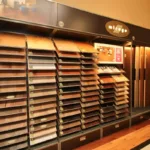 Hardwood FlooringJune 21, 2025How to Find FSC-Certified Wholesale Wood Flooring: Your Complete Guide
Hardwood FlooringJune 21, 2025How to Find FSC-Certified Wholesale Wood Flooring: Your Complete Guide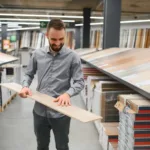 Hardwood FlooringJune 18, 2025Wholesale vs. Retail Wood Flooring: What’s the Difference in Quality?
Hardwood FlooringJune 18, 2025Wholesale vs. Retail Wood Flooring: What’s the Difference in Quality?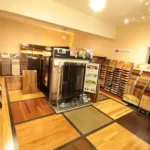 Hardwood FlooringJune 15, 2025Wholesale Wood Flooring for Contractors: What You Need to Know
Hardwood FlooringJune 15, 2025Wholesale Wood Flooring for Contractors: What You Need to Know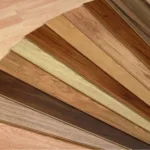 Hardwood FlooringJune 12, 2025The Best Types of Wood for Hardwood Floors
Hardwood FlooringJune 12, 2025The Best Types of Wood for Hardwood Floors

